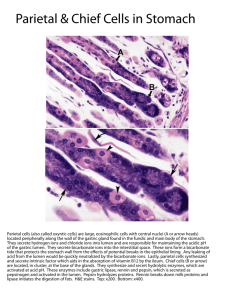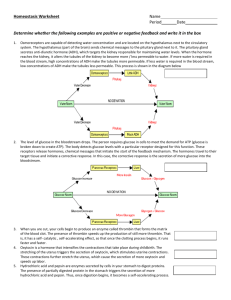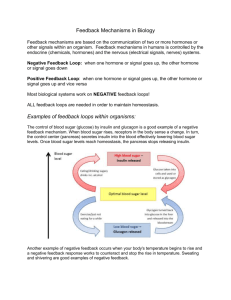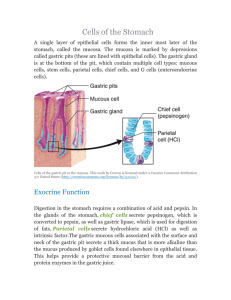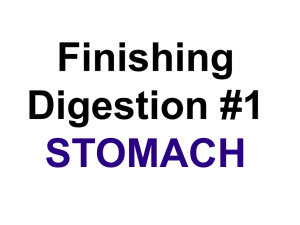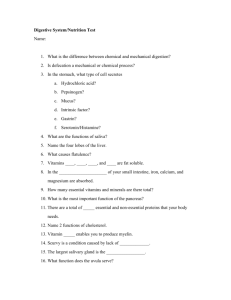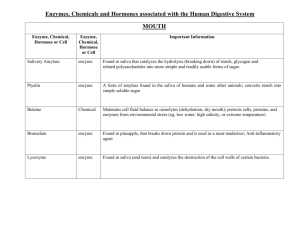File
advertisement
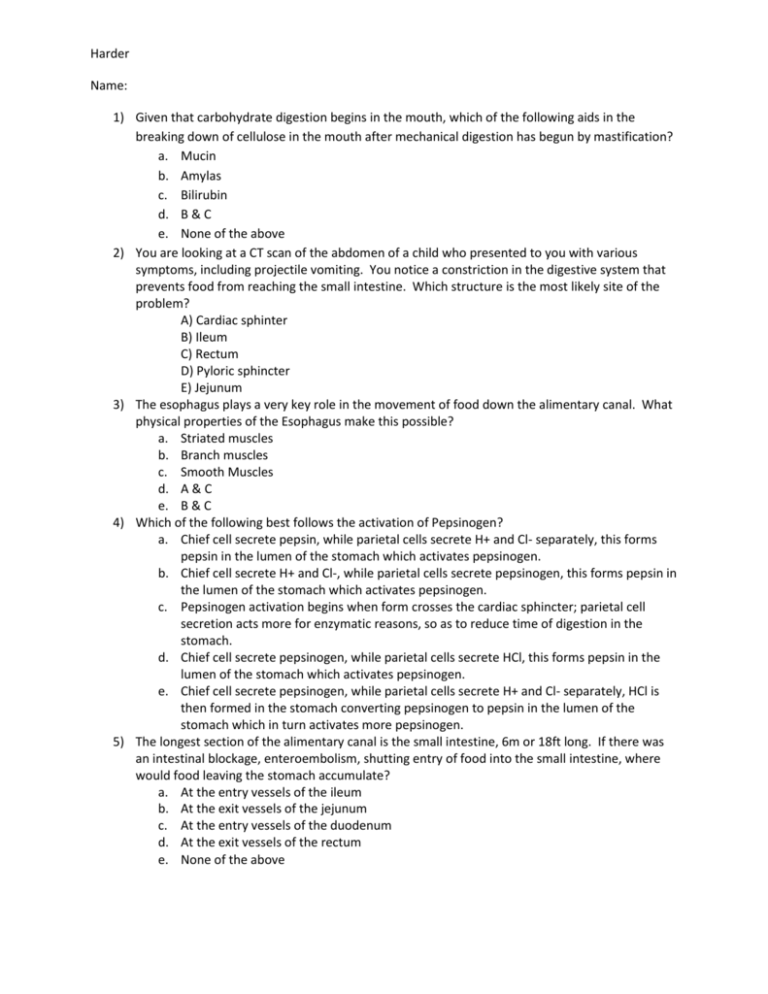
Harder Name: 1) Given that carbohydrate digestion begins in the mouth, which of the following aids in the breaking down of cellulose in the mouth after mechanical digestion has begun by mastification? a. Mucin b. Amylas c. Bilirubin d. B & C e. None of the above 2) You are looking at a CT scan of the abdomen of a child who presented to you with various symptoms, including projectile vomiting. You notice a constriction in the digestive system that prevents food from reaching the small intestine. Which structure is the most likely site of the problem? A) Cardiac sphinter B) Ileum C) Rectum D) Pyloric sphincter E) Jejunum 3) The esophagus plays a very key role in the movement of food down the alimentary canal. What physical properties of the Esophagus make this possible? a. Striated muscles b. Branch muscles c. Smooth Muscles d. A & C e. B & C 4) Which of the following best follows the activation of Pepsinogen? a. Chief cell secrete pepsin, while parietal cells secrete H+ and Cl- separately, this forms pepsin in the lumen of the stomach which activates pepsinogen. b. Chief cell secrete H+ and Cl-, while parietal cells secrete pepsinogen, this forms pepsin in the lumen of the stomach which activates pepsinogen. c. Pepsinogen activation begins when form crosses the cardiac sphincter; parietal cell secretion acts more for enzymatic reasons, so as to reduce time of digestion in the stomach. d. Chief cell secrete pepsinogen, while parietal cells secrete HCl, this forms pepsin in the lumen of the stomach which activates pepsinogen. e. Chief cell secrete pepsinogen, while parietal cells secrete H+ and Cl- separately, HCl is then formed in the stomach converting pepsinogen to pepsin in the lumen of the stomach which in turn activates more pepsinogen. 5) The longest section of the alimentary canal is the small intestine, 6m or 18ft long. If there was an intestinal blockage, enteroembolism, shutting entry of food into the small intestine, where would food leaving the stomach accumulate? a. At the entry vessels of the ileum b. At the exit vessels of the jejunum c. At the entry vessels of the duodenum d. At the exit vessels of the rectum e. None of the above
